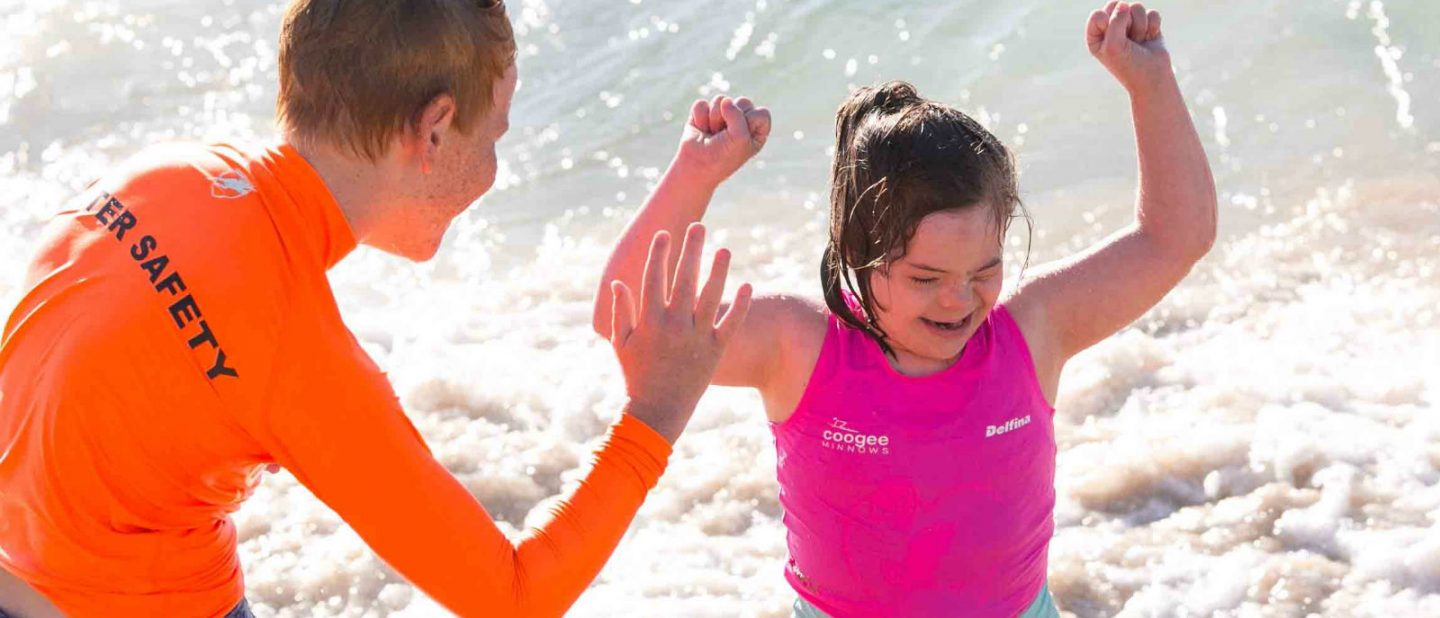
Water safety and staying safe over the holiday period
By Jess Thackeray, OT and Erika Gleeson, Behaviour Specialist
Water activities such as visiting the beach or swimming in a pool, play a significant role in Australian life. For many families, the summer months wouldn’t be complete without a trip to the beach, local pool or kayaking in the river. For this reason, many parents regard swimming lessons as a non-negotiable for their child. But swimming lessons are just one of the necessary pieces to the water safety puzzle.
Many young people in Australia don’t have the skills they need to be safe around water. Between 30-50 per cent of Australian primary school students aged between 8-11 years are unable to swim 50 metres unaided, and those who can may still have difficulty when swimming in an unfamiliar place.
Generalisation refers to the ability to transfer skills and information learned in one setting, to other settings, people and activities. This skill can be especially challenging for children with autism and other disabilities; and is of particular importance for parents to consider when spending time around lakes, ponds, rivers, unfamiliar pools, and at the beach.
WHY IS THE HOLIDAY PERIOD A HIGH-RISK TIME?
The holiday period presents unique challenges to water safety. Last year, 45% of drownings in Australia occurred in summer. The majority of incidents occurred in rivers, creeks, streams, beaches and swimming pools.
1. Heat: The warmer weather encourages more people, especially those who are not strong swimmers, to spend time outside and around water.
2. Distractions: More social gatherings, busy schedules, alcohol and life in the technology age create more opportunities for distractions. Constant supervision is one of the key water safety strategies for drowning prevention. Allocating a designated watcher at all times when children are in, on or around water provides an additional layer of safety during the festive season.
3. Wandering: Wandering is the tendency for an individual to try to leave the safety of a responsible person’s care or a safe area, which has the potential to result in harm or injury. Children with autism are four times more likely to wander from a safe environment than their typically developing peers. Make sure you have a wandering prevention plan established. Get in touch with Autism Swim if you need more information on this!
AUTISM AND WATER SAFETY
Families with a child or adult who has autism or other disability face increased water safety risks, particularly during the festive season. While wandering is often the first step preceding a water safety incident, there are many other contributing factors which place children and adults with autism at heightened risk:
– Attraction to water: Some individuals may gravitate toward bodies of water and find that being immersed in water can alleviate overwhelming sensory input. When this happens, swimmers may find it difficult to resurface as they feel safer underwater, where they have control over the visual, auditory and olfactory (smells) input they are exposed to.
– Difficulty identifying danger: some swimmers require additional support to identify and avoid dangerous situations. Knowledge and awareness of local hazards and/or risks and of one’s own limitations are essential for ensuring water safety. Obviously, these skills need to be taught in ways that are conducive to the swimmer’s needs and learning preferences.
– Difficulties with generalisation of skills: Although many individuals with autism and other disabilities may have had swimming lessons and developed swimming and water safety skills, they may experience difficulties in using these skills across different environments. Safe, supervised exposure to new water environments can play a key role in building water awareness and safety skills.
YOUR 5-STEP PLAN FOR WATER SAFETY THIS SUMMER:
Although learning to swim is important for ensuring water safety, it is not a stand-alone prevention strategy for drowning. Swimming lessons only provide one layer of protection, and definitely do not “drown-proof” a child. Every family needs a water- safety strategy, incorporating the 5 evidence-based strategies for water safety.
1. CHECK YOUR POOL FENCES:
Pool fences are still the #1 water safety feature in Australian family homes with a pool. Make sure yours completely isolates the pool from the house and yard, has self-closing and self-latching gates and is compliant to the Australian Building Standards. This is the most studied and effective drowning-prevention strategy for a young child, preventing more than 50% of swimming-pool drownings of young children.
2. PRACTICE WEARING LIFE JACKETS:
Wearing life jackets during days out kayaking or on a boat are essential to ensure safety in the case of an incident. However, life-jackets can be uncomfortable and overwhelming for swimmers with sensory difficulties. Consider creating a social story about wearing a life jacket, and practice wearing it at home and during swimming lessons using a slow, desensitisation approach.
3. CONSISTENT ATTENDANCE AT HIGH QUALITY SWIMMING LESSONS:
As many as 3 out of 4 children quit swimming lessons by their eighth birthday. However, key swimming milestones are typically not reached until age 12. 91 per cent of our community had left swimming services as they didn’t feel like their child’s needs were understood. Encourage your child to continue swimming lessons through primary school, and choose an Autism Swim Approved service which addresses all aspects of the National Swimming and Water Safety Framework:
a. Movement and swimming strokes (freestyle, backstroke, breaststroke, survival backstroke)
b. Survival and lifejacket skills (treading/sculling water, floating with lifejacket for 1 minute)
c. Rescue Skills (be rescued or perform a reach/throw rescue).
It is essential that parents pay close attention during swimming lessons, to have a clear understanding of their child’s abilities and limitations. An Autism Swim Approved Swimming Centre and/or Instructor are skilled water safety specialists and can tailor classes to meet sensory, behavioural and activity needs of your child.
4. SUPERVISION AND WANDERING PREVENTION:
Close, constant and attentive supervision of children in or around any water is a primary and absolutely essential preventative strategy. For beginner swimmers, adequate supervision is “touch supervision” in which the supervising adult is within arm’s reach of the child so he or she can pull the child out of the water if their head becomes submerged under water. At social gatherings where there is an increased risk of lapses in supervision we recommend allocating a designated watcher to ensure close supervision at all times.
Wandering prevention and management: There are a number of tools which can support you to reduce the risks associated with wandering for your child. Some strategies include: supporting the development of self- regulation skills, GPS tracking devices, fences and constant supervision. At the beach, you may consider briefing lifeguards if your child is prone to wandering. Autism Swim have a range of resources to support the development of a wandering prevention plan and can help to ensure it is appropriate to each individual’s needs including the world first Wandering and Drowning Prevention Toolkit.
5. KNOW THE SIGNS, RESCUES AND CPR TRAINING:
Drowning probably doesn’t look like what you’d expect it to.
The reality is that the waving, splashing and yelling that TV and film prepares us to look for is rarely seen in real life. Drowning is almost always a deceptively quiet event. Drowning people cannot voluntarily control their arm movements, and are unable to wave for help, move toward a rescuer or reach out for a piece of rescue equipment. Similarly, the mouths of drowning people are not above the surface of the water long enough for them to exhale, inhale, and call for help. Instead, signs to watch for include:
– Head low in the water, mouth at water level
– Head tilted back with mouth open
– Eyes closed or glassy and empty, unable to focus
– Hair over forehead or eyes
– Not using legs – vertical
– Hyperventilating or gasping
– Trying to roll over onto their back
– Appear to be climbing an invisible ladder or trying to swim in a particular
direction but not making headway
Immediate resuscitation at the submersion site, even before the arrival of emergency medical services is the most effective means to improve outcomes in the event of a drowning incident. Consider whether your CPR training is up to date and educate yourself on the hierarchies of safe water rescues.
Be prepared this holiday season and stay safe!
More information can be found at www.autismswim.com.au. You can also contact Autism Swim for reference information regarding the stats and research in the above article.







